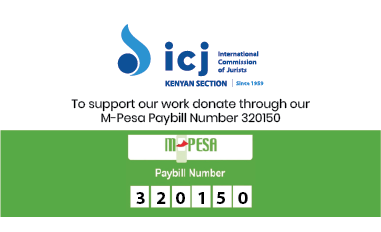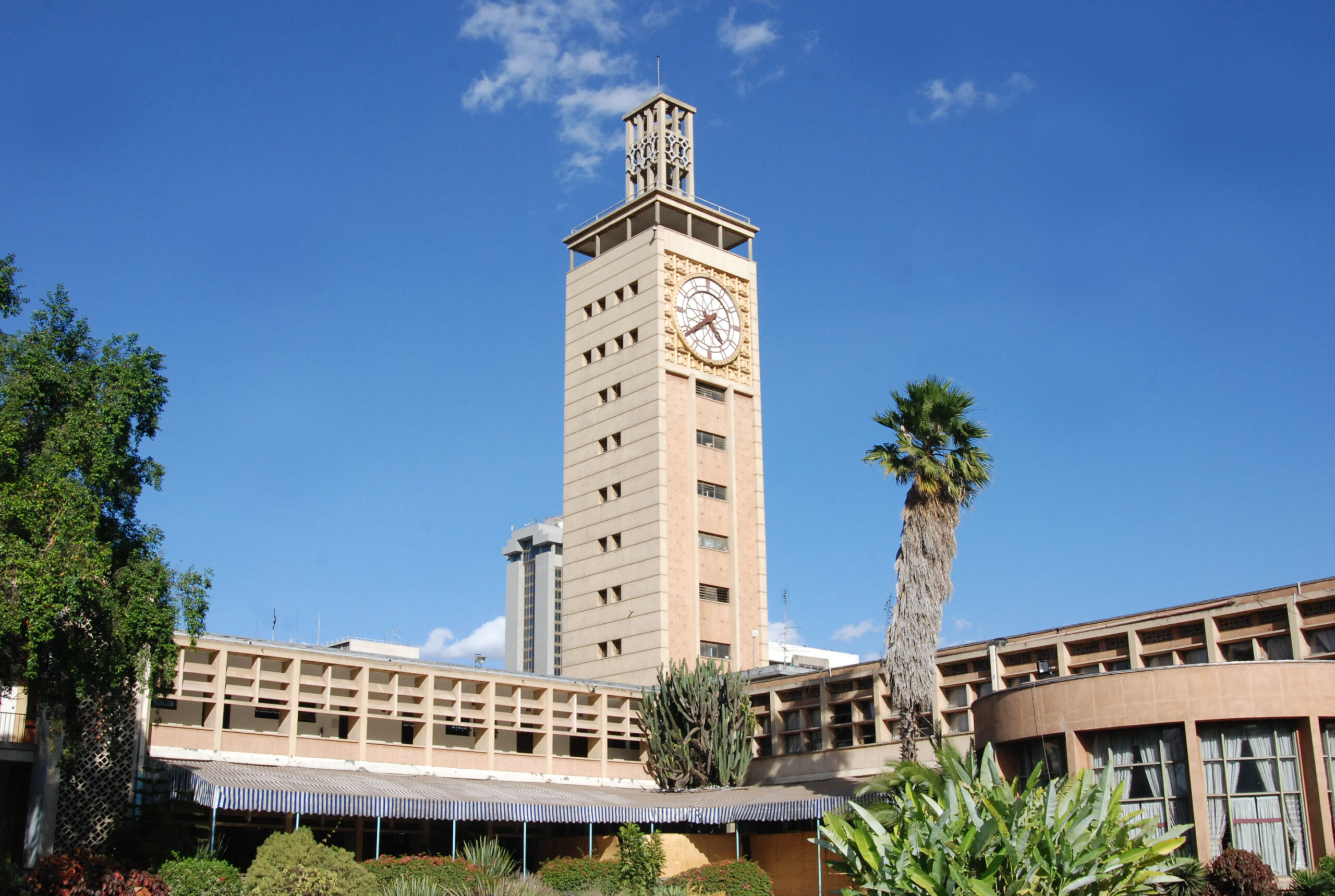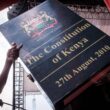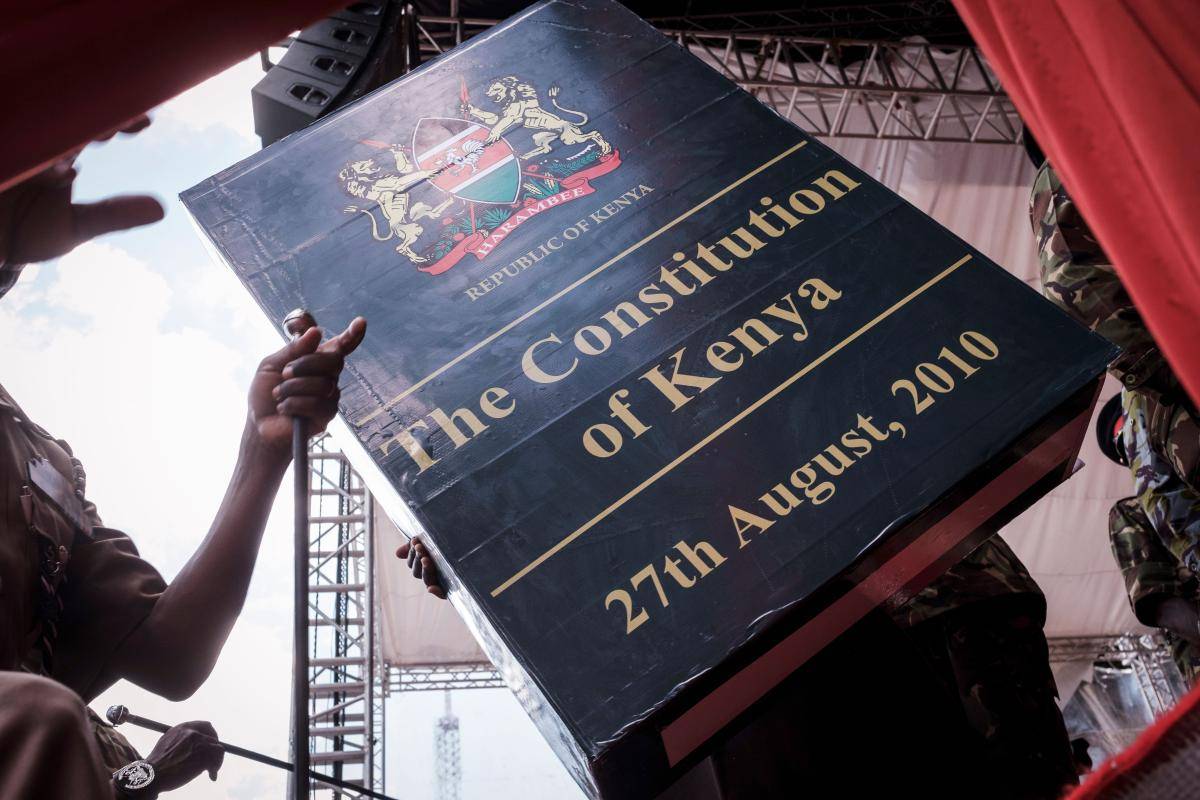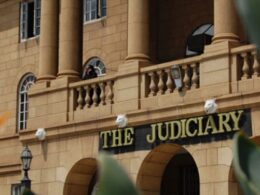NAIROBI,Kenya – Over the past two weeks, Kenyans have been discussing President William Ruto’s declarations that certain individuals are manipulating the Judiciary to obstruct government initiatives through corruption. President Ruto has vowed to proceed to implement pro-poor and pro-people initiatives such as affordable housing and healthcare, irrespective of “corruptly obtained” court orders.
However, this has sparked condemnation from various segments of the Kenyan society, citing the President’s disregard for the Constitution, separation of powers, and the rule of law. Critics demand that President Ruto provides evidence of collusion and corruption, urging the government to adhere to established procedures for investigating and removing corrupt and unsuitable judges as laid out in the Constitution and the law.
Meanwhile, supporters frame the President’s declaration as pivotal, drawing parallels to the controversial “radical judicial surgery” led by Justice Aaron Ringera under President Mwai Kibaki in 2003. During that period, the Judiciary was generally considered corrupt, spineless, and subservient to the Executive. This led to widespread abuse of the law, procedures, constitutional tenets and human rights such as fair trial and torture. Notably, when Kibaki took over, Kenyans were ranked as the most optimistic people in the world.
The ‘radical judicial surgery’ was initiated based on a report by a Justice Ringera-led sub-committee spanning six months. Consequently, the Chief Justice labelled five Court of Appeal Judges, 18 High Court judges, and 82 magistrates as corrupt. Those named faced a two-week ultimatum to resign or undergo tribunal proceedings, all without the release of the report that condemned them.
The tribunal reinstated five out of seven judges, including Judge Philip Waki, despite most of them resigning. Through a judicial review process, a judge successfully argued for the termination of tribunal hearings, citing that the Chief Justice’s failure to communicate allegations before the announcement, violated the principles of natural justice.
Complicating matters, the Law Society of Kenya refused to cooperate, asserting that the subcommittee ignored their submissions and evidence. Allegations of bias, tribalism, and political favouritism emerged, with some expressing discontent over the exclusion of known corrupt individuals and the inclusion of clean ones.
Over the past two weeks, Kenyans have been discussing President William Ruto’s declarations that certain individuals are manipulating the Judiciary to obstruct government initiatives through corruption. President Ruto has vowed to proceed to implement pro-poor and pro-people initiatives such as affordable housing and healthcare, irrespective of “corruptly obtained” court orders.
However, this has sparked condemnation from various segments of the Kenyan society, citing the President’s disregard for the Constitution, separation of powers, and the rule of law. Critics demand that President Ruto provides evidence of collusion and corruption, urging the government to adhere to established procedures for investigating and removing corrupt and unsuitable judges as laid out in the Constitution and the law.
Meanwhile, supporters frame the President’s declaration as pivotal, drawing parallels to the controversial “radical judicial surgery” led by Justice Aaron Ringera under President Mwai Kibaki in 2003. During that period, the Judiciary was generally considered corrupt, spineless, and subservient to the Executive. This led to widespread abuse of the law, procedures, constitutional tenets and human rights such as fair trial and torture. Notably, when Kibaki took over, Kenyans were ranked as the most optimistic people in the world.
The ‘radical judicial surgery’ was initiated based on a report by a Justice Ringera-led sub-committee spanning six months. Consequently, the Chief Justice labelled five Court of Appeal Judges, 18 High Court judges, and 82 magistrates as corrupt. Those named faced a two-week ultimatum to resign or undergo tribunal proceedings, all without the release of the report that condemned them.
The tribunal reinstated five out of seven judges, including Judge Philip Waki, despite most of them resigning. Through a judicial review process, a judge successfully argued for the termination of tribunal hearings, citing that the Chief Justice’s failure to communicate allegations before the announcement, violated the principles of natural justice.
Complicating matters, the Law Society of Kenya refused to cooperate, asserting that the subcommittee ignored their submissions and evidence. Allegations of bias, tribalism, and political favouritism emerged, with some expressing discontent over the exclusion of known corrupt individuals and the inclusion of clean ones.
Between 2003 and 2007, despite the Judiciary proclaiming independence and competence, Executive influence in appointments persisted. President Kibaki’s last-minute appointment of seven judges, including two Court of Appeal judges, days before the elections in 2007 raised questions about the impact on faith in these crucial institutions and their potential connection to the post-election violence of 2007-2008.
Also in 2007, Kibaki unilaterally appointed 18 out of 22 Electoral Commission of Kenya commissioners, which was a deviation from the precedence set at the 1997 Inter-Parliamentary Parties Group negotiations that provided a formula for appointing commissioners based on political party parliamentary strength.Following the National Accord between President Kibaki and ODM leader Raila Odinga, institutional reforms emphasised the necessity of judicial reforms.
A vetting board, established a year after the 2010 Constitution, dealt with the suitability of existing judges and magistrates. The Constitution aimed to secure the Judiciary’s independence from political interference and ensure functional and financial autonomy by creating an independent JSC and Judiciary Fund. Notably, the Judiciary Fund was recently established under the Ruto regime. Another change was the creation of the Supreme Court with province over presidential petitions.
Article 168 of the Constitution stipulates that the removal of a judge must be initiated solely through the JSC by its prompting or via a written petition outlining facts related to specified grounds such as incompetence or gross misconduct. The reason could be that any deviation from this process could lead to the targeted removal of judicial officers based on the agreeability of their decisions, creating a chilling effect where self-preservation prevails over justice.
The Writer Demas Kiprono is the Ag. Executive director ICJ Kenya.
The article was first published on the standard.

